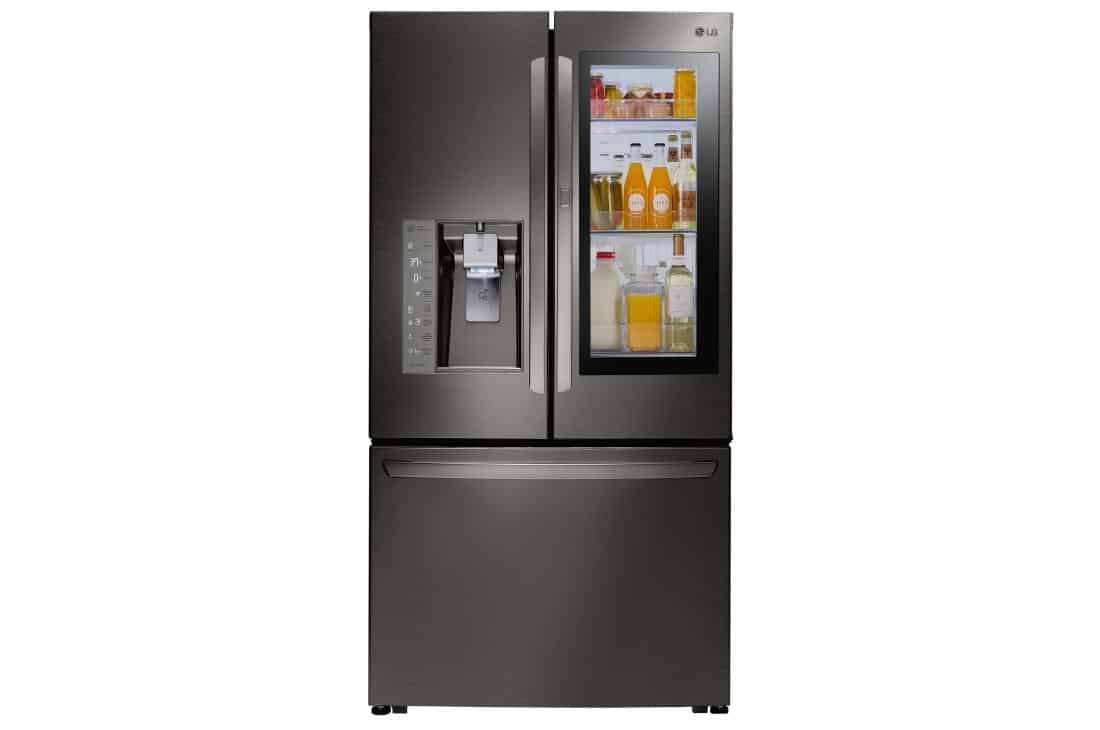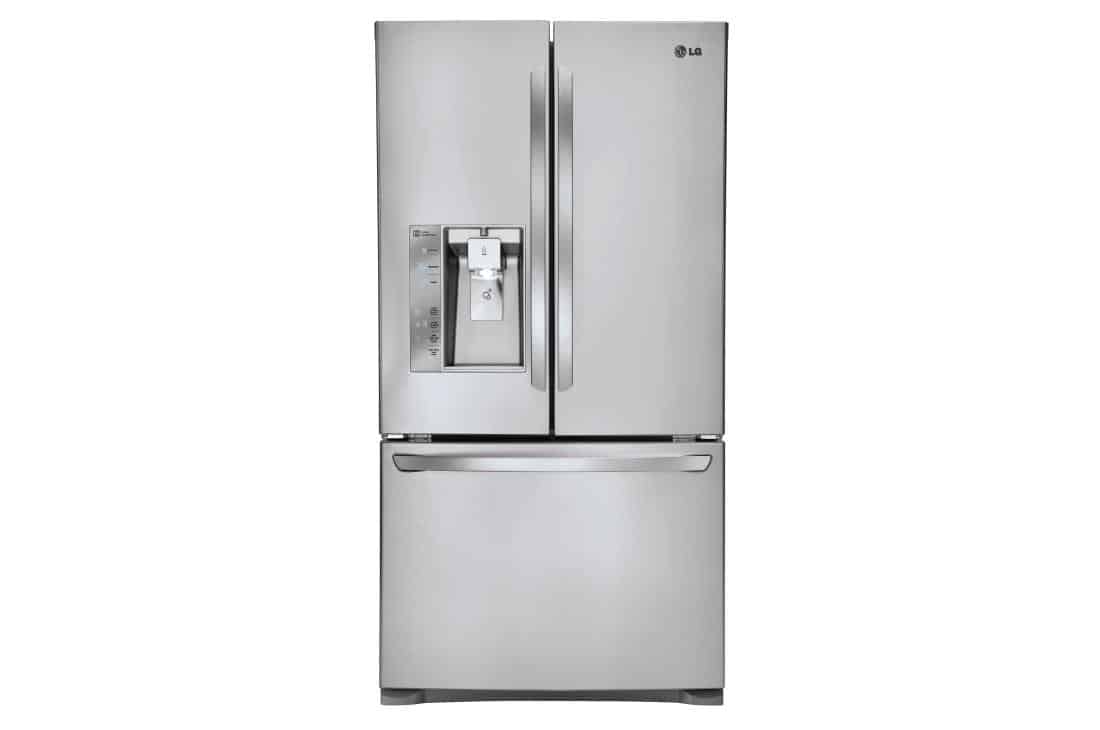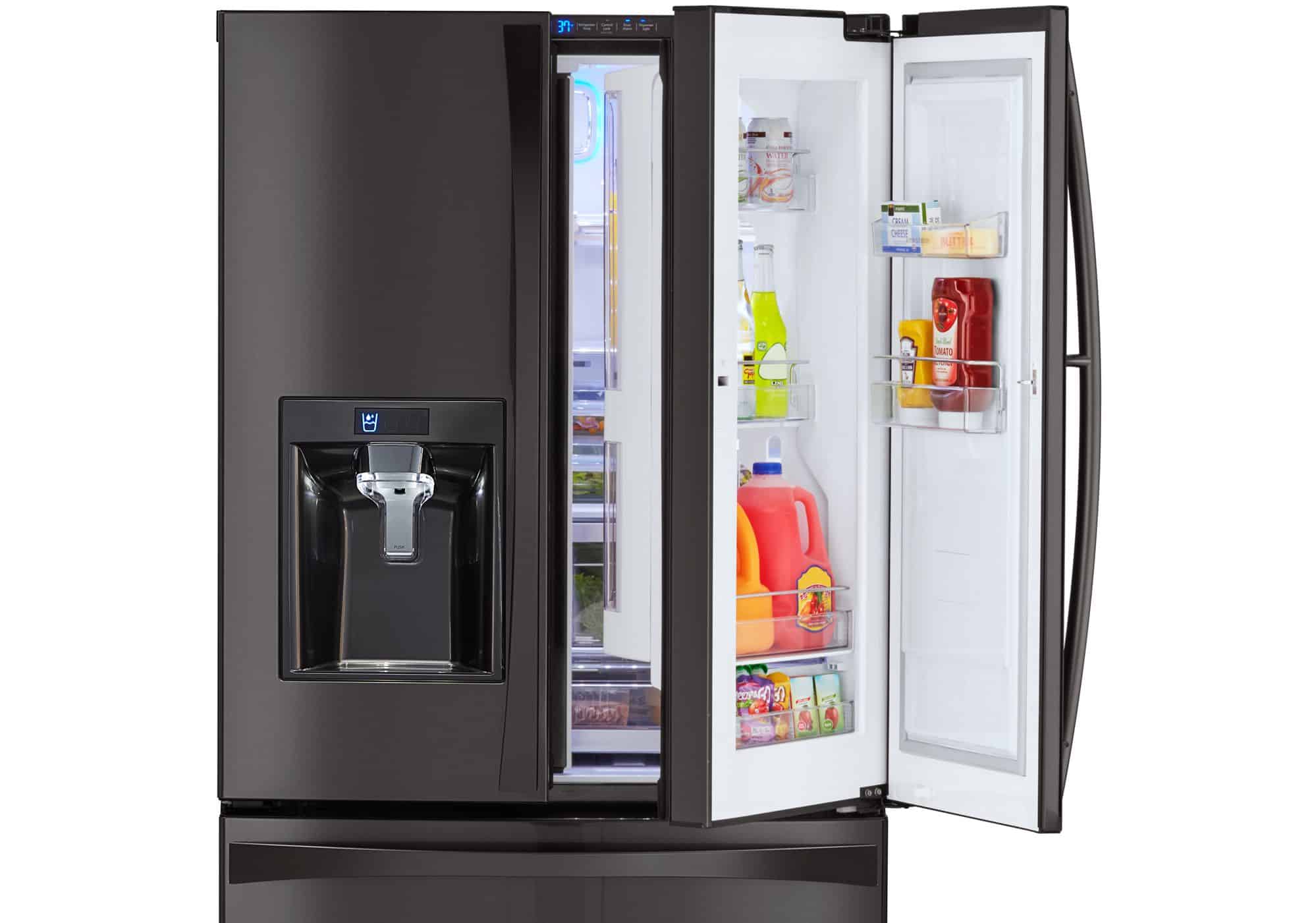If you have food spoiling every day, you may have a faulty refrigerator, or an accidental adjustment to your fridge’s temperature settings. Another headache you could be facing is that you’re finding items in your refrigerator frozen when they shouldn’t be. So what gives? Why is your refrigerator temperature too warm or too cold? What should your refrigerator temperature be? This question applies to you whether you have an LG – Best French Door Refrigerator Brand or an off-brand fridge.
The Ideal Refrigerator Temperature
The purpose of a refrigerator is to slow the growth of bacteria on produce, dairy, and meat. If you’ve found that your machine is having issues either chilling or freezing (depending on the compartment), then you need a solution and you need one fast.
A refrigerator’s main compartment is meant to be regulated between 35° and 38° Fahrenheit (regular refrigerator temperature should be closer to 35°), the regular refrigerator temperature. Bacteria development begins to increase exponentially at around 40 degrees, and most materials start to freeze at 32°. Your freezer temperature range should be between 32° at the highest, and its absolute lowest setting possible.
Managing Your Refrigerator’s Temperature
Do you have a digital display on your refrigerator? If you do, you can check the internal temperature and the machine’s set points from the display. If you’re having trouble figuring out how to navigate the digital interface, we recommend you consult with the owner’s manual. If you’ve misplaced the manual, a simple Google search with the brand name, model number, and the words “user manual” should result in uncovering a PDF version of the manual online. Manufacturers publish this material for free on their websites.
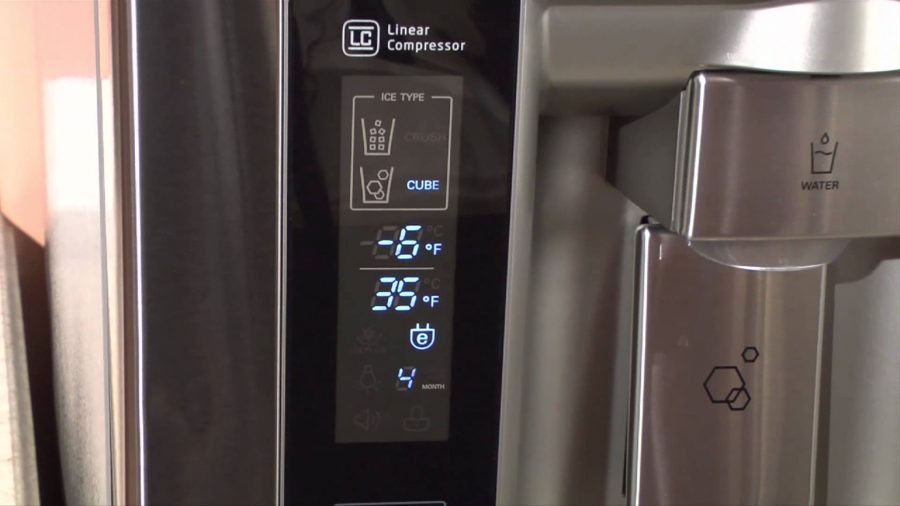
If you have an older refrigerator without an exterior display, open the doors and look inside each compartment for a numbered dial. Machines without electronic controls will have a manual knob inside to adjust the internal temperature settings of each compartment. Unfortunately, this doesn’t actually provide the current temperature inside the refrigerator.
A simple, standalone thermometer can be placed inside the refrigerator to get a temperature reading and compare with the manual setting. Numbered settings on older machines may not display actual temperatures, but rather a fridge temperature setting 1-7 (or something similar like, “fridge temperature 1-5”). If this is the case, we again recommend that you consult your owner’s manual for guidance.
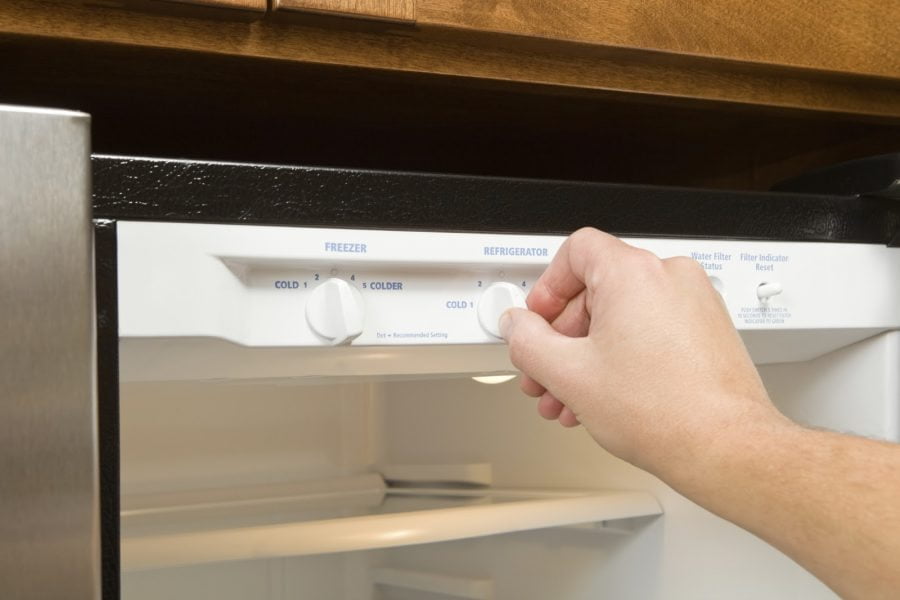
If you’ve managed to resolve a temperature setting and you’re still concerned about maintaining the temperature set point in your fridge, keep reading:
- Don’t transfer hot items directly into the refrigerator, as this will cause the machine to use more energy to cool the overall space and also warm up the temperature of surrounding food.
- A fuller refrigerator will help regulate temperature more consistently versus a fridge that has little in it. As food reaches the refrigerator’s cooling/freezing set point it lowers the amount of work the fridge has to do to keep everything cool, or frozen.
- Older machines may have frayed, or missing, seals along the door’s edge. Check to see if seals are missing. Missing seals can be replaced very easily, and do-it-yourself superstores like Lowes and Home Depot sell self-adhesive seals for this very purpose.
Stay Away from the Danger Zone
If food in your freezer has fallen below 32°, then it may have begun to melt, and you should always be cautious of re-freezing defrosted food. Frozen foods, especially meats, actually begin to cook when warmed (even from freezing to 40°), but according to the FDA (if stored properly) most meats thawed in a refrigerator can be refrozen without health issues – although quality of taste may decline.
If your main refrigerator compartment has fallen below 40° for too long, then bacterial growth has multiplied by at least a rate of three. There’s no hard and fast rule on how long food can last in the danger zone before becoming inedible – however we encourage readers to pay close attention to items that have spent more than half an hour in a fridge that has stopped working. Always ensure products won’t harm you if they’re ingested after spending an extended time in the bacterial danger zone, and try to avoid multiple changes in food temperature prior to consumption.
Related Articles:

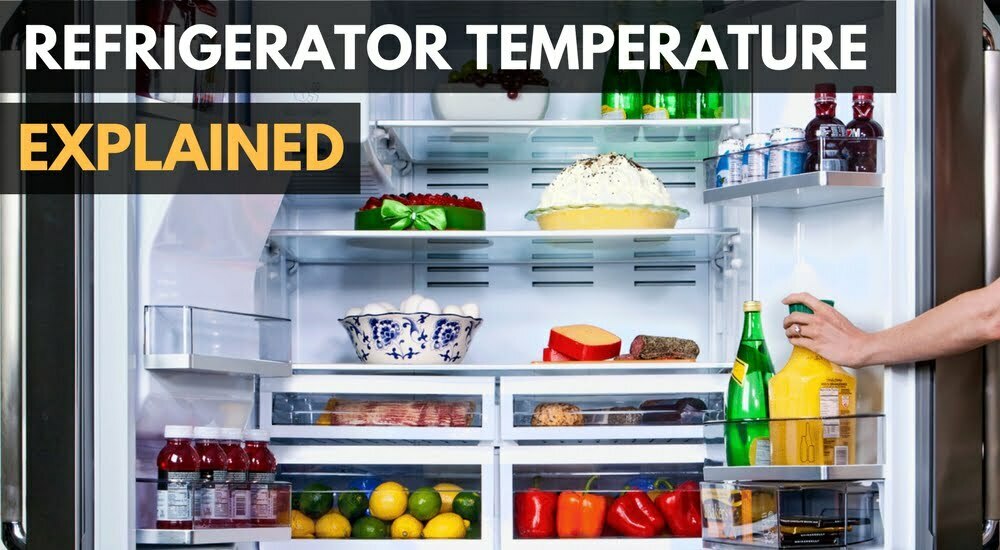











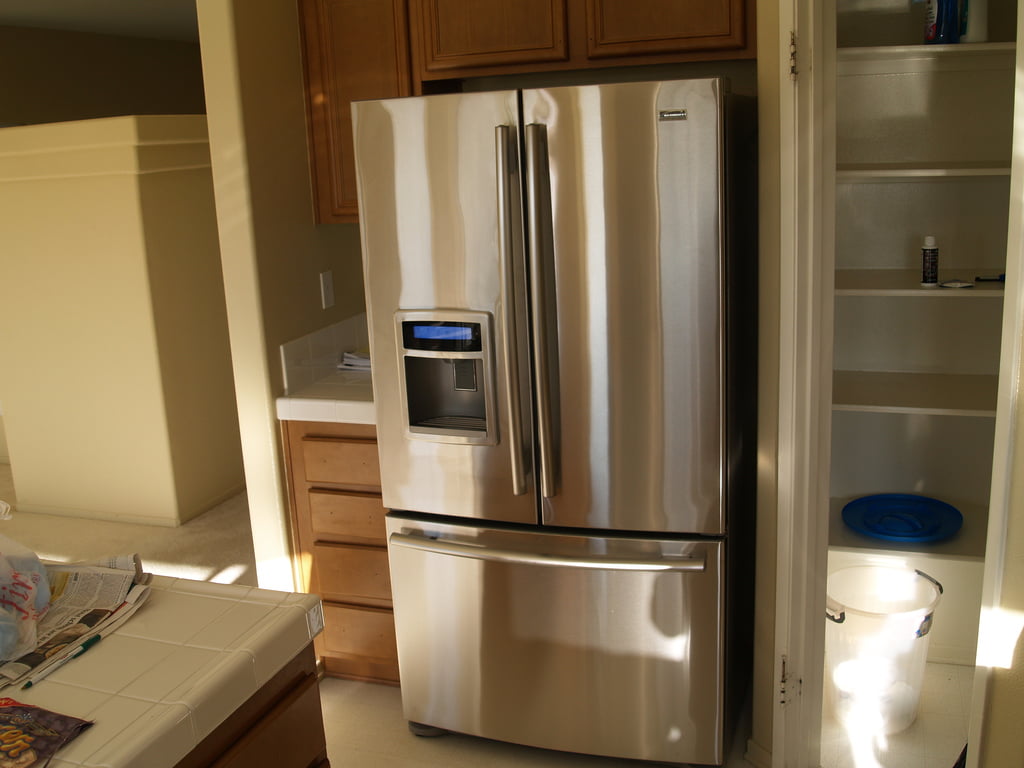
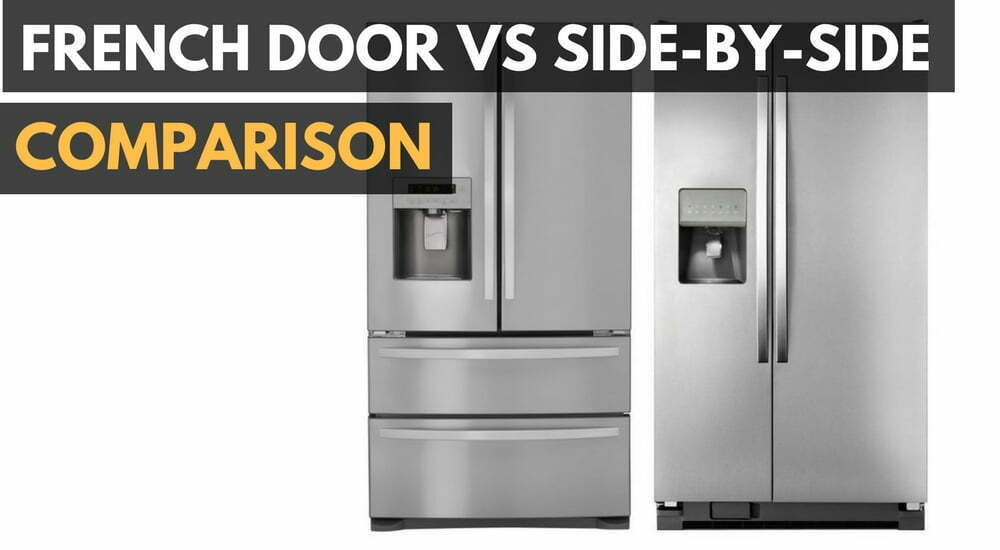
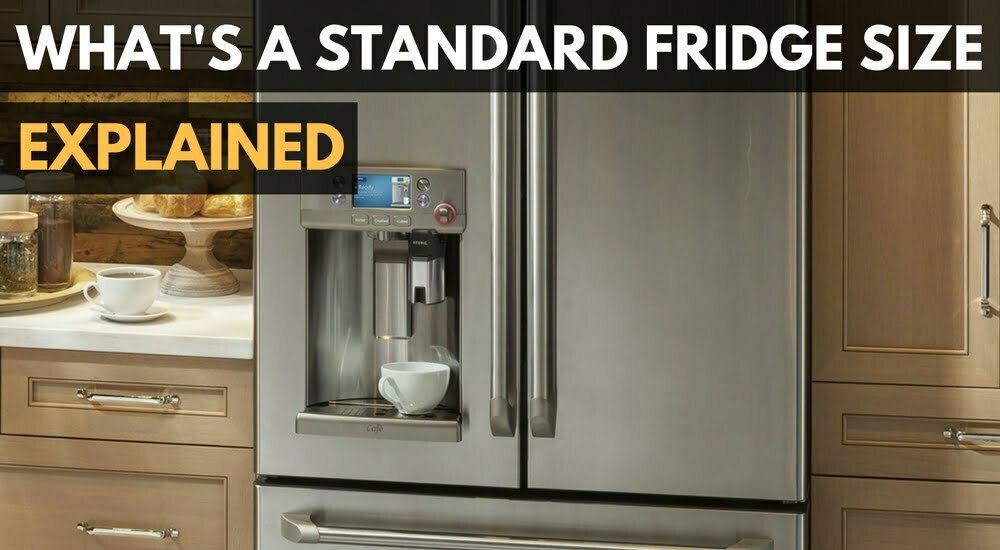
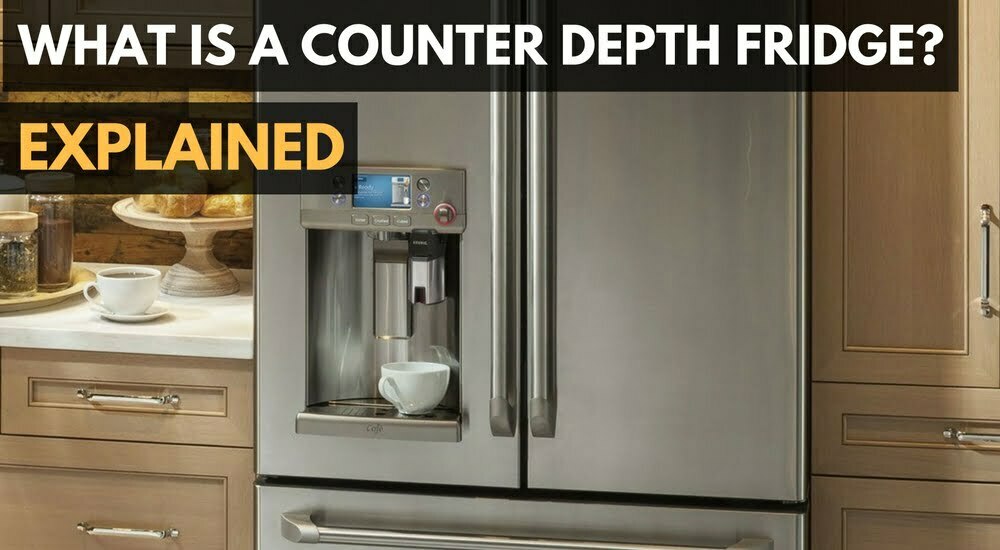
![Best Kitchen Appliances in [year] ([month] Reviews) 12 Best Kitchen Appliances in 2025 (December Reviews)](https://www.gadgetreview.dev/wp-content/uploads/best-kitchen-appliances.jpg)
![Best Refrigerators in [year] ([month] Reviews) 13 Best Refrigerators in 2025 (December Reviews)](https://www.gadgetreview.dev/wp-content/uploads/lg-brand-refrigerator-900x871-1.jpg)
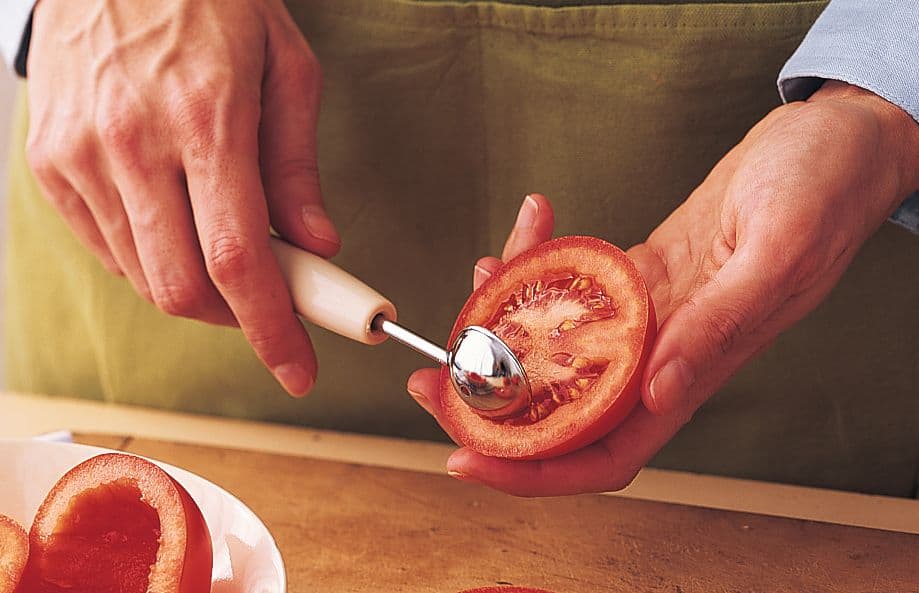
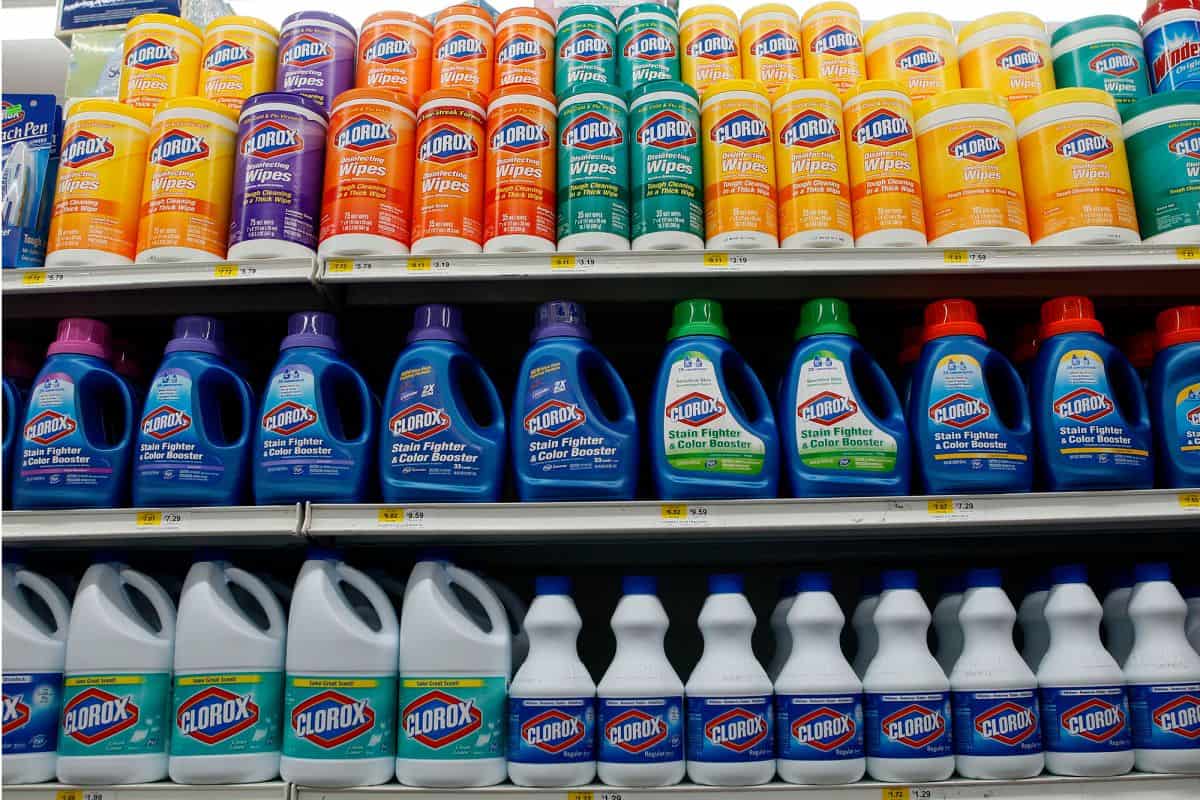
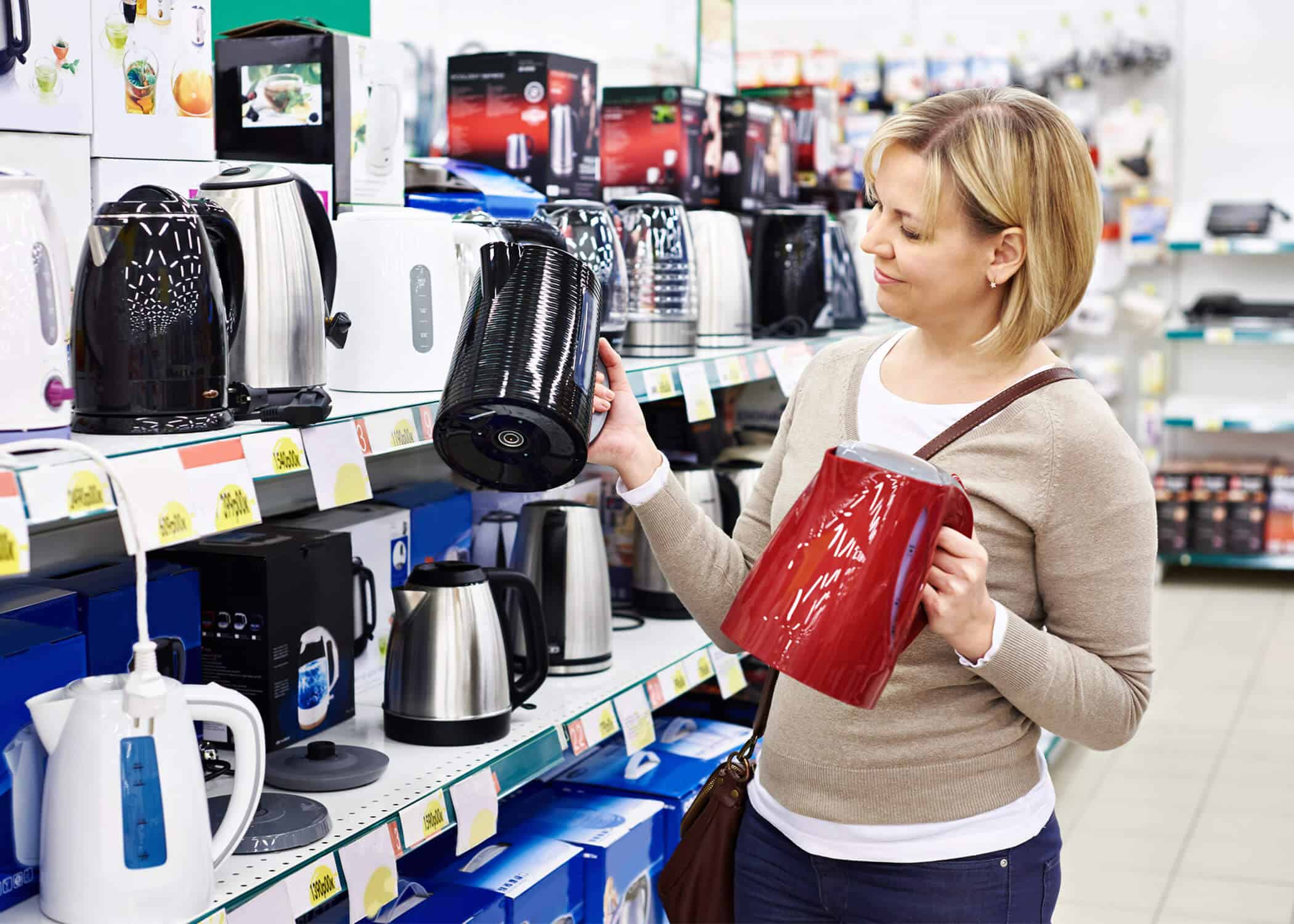
![6 Best Refrigerator Water Filters in [year] 17 6 Best Refrigerator Water Filters in 2025](https://www.gadgetreview.dev/wp-content/uploads/refrigerator-water-filters.jpg)
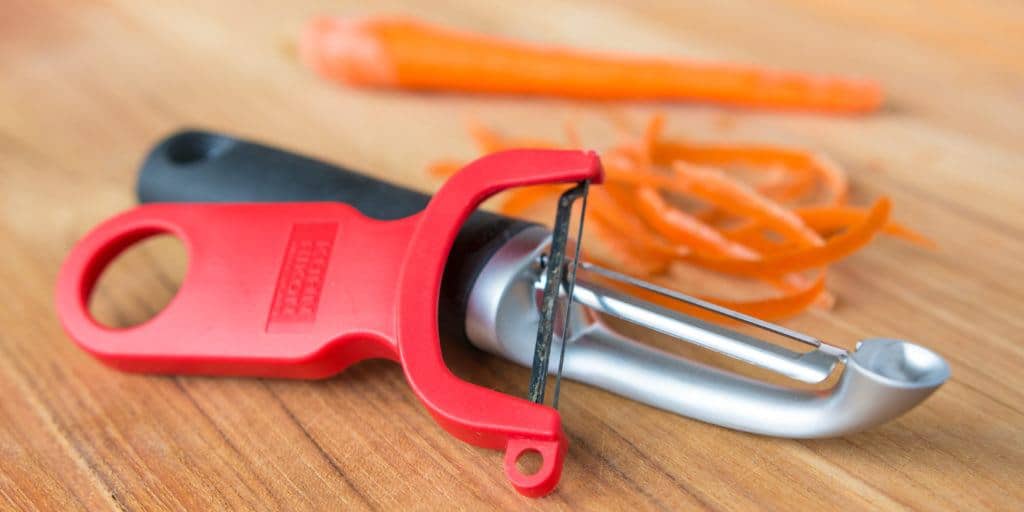
![Best Stainless Steel Cookware in [year] 19 Best Stainless Steel Cookware in 2025](https://www.gadgetreview.dev/wp-content/uploads/best-stainless-steel-cookware.jpg)
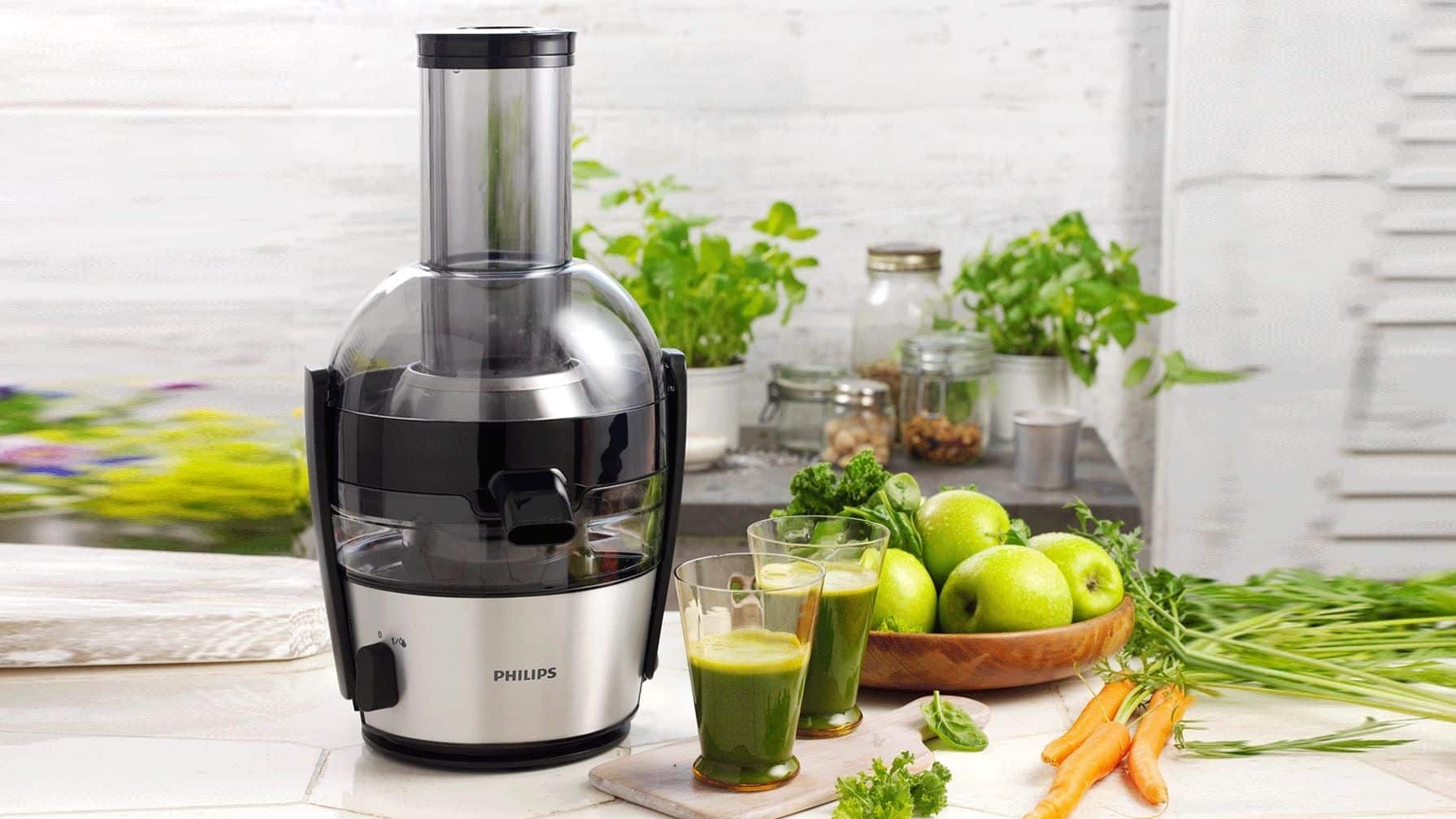
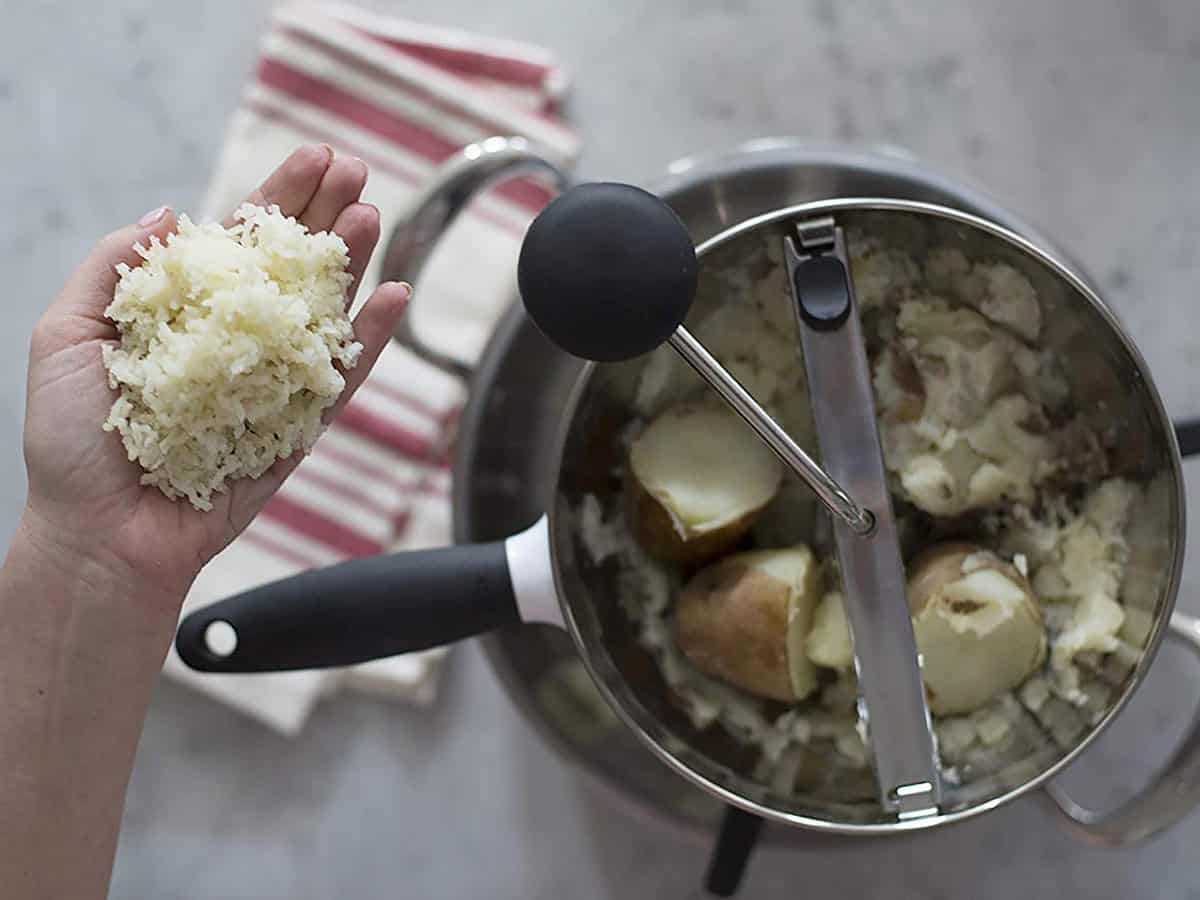
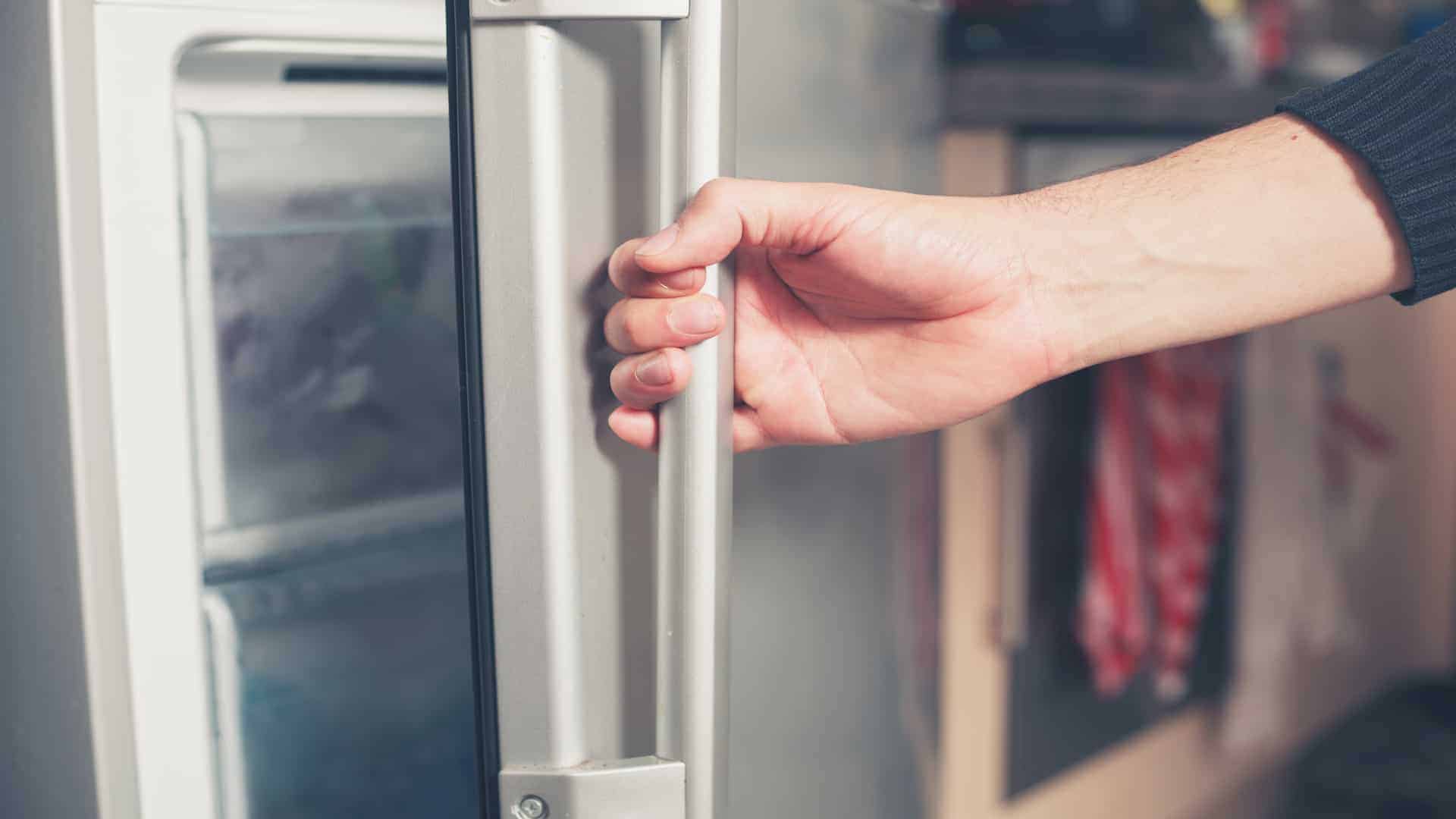
![7 Best Wedding Cake Topper in [year] 23 7 Best Wedding Cake Topper in 2025](https://www.gadgetreview.dev/wp-content/uploads/best_wedding_cake_topper.jpg)
![7 Best Universal Pans and Pot Lids in [year] 24 7 Best Universal Pans and Pot Lids in 2025](https://www.gadgetreview.dev/wp-content/uploads/best-universal-pan-and-pot-lids-scaled-1.jpg)
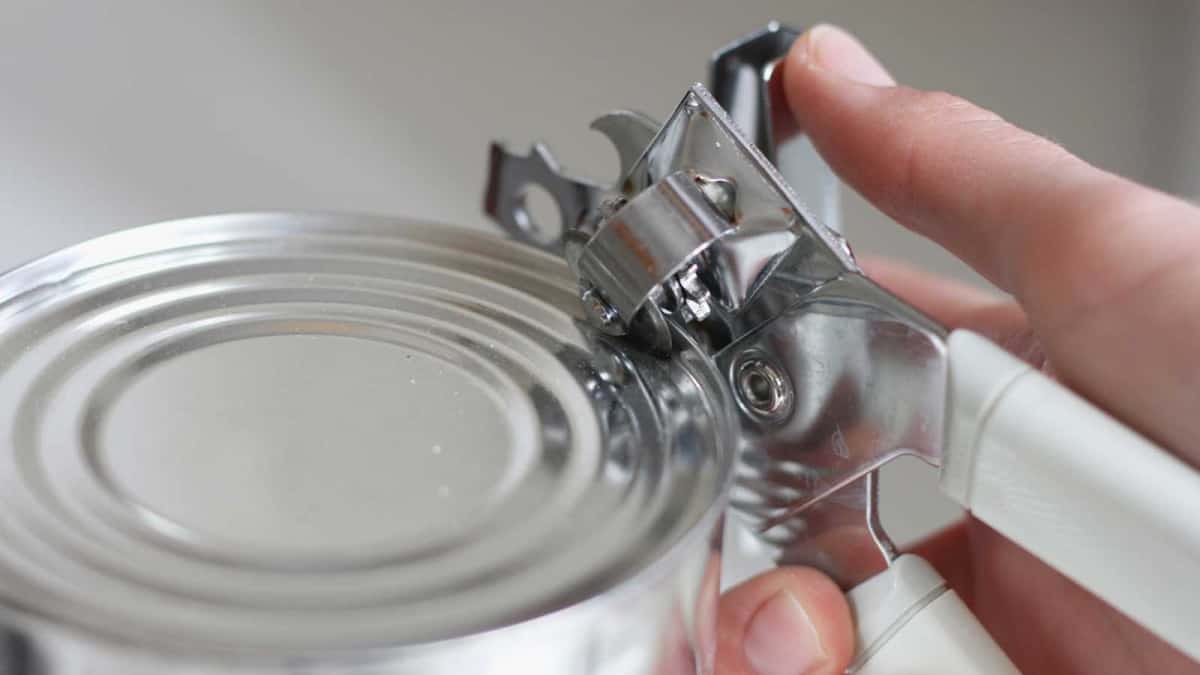
![7 Best Refrigerator Thermometers in [year] 26 7 Best Refrigerator Thermometers in 2025](https://www.gadgetreview.dev/wp-content/uploads/best-refrigerator-thermometers-scaled-1.jpg)
![7 Best Pie Plate for Pies and Quiches in [year] 27 7 Best Pie Plate for Pies and Quiches in 2025](https://www.gadgetreview.dev/wp-content/uploads/best-pie-plate-for-pies-and-quiches.jpg)
![7 Best Seafood Forks for Your Meal in [year] 28 7 Best Seafood Forks for Your Meal in 2025](https://www.gadgetreview.dev/wp-content/uploads/best-seafood-forks-for-your-meal.jpg)
![7 Best Herb Trimming Scissors in [year] 29 7 Best Herb Trimming Scissors in 2025](https://www.gadgetreview.dev/wp-content/uploads/best-herb-trimming-scissors.jpg)
![7 Best Crepe Makers in [year] 30 7 Best Crepe Makers in 2025](https://www.gadgetreview.dev/wp-content/uploads/best-crepe-maker.jpg)
